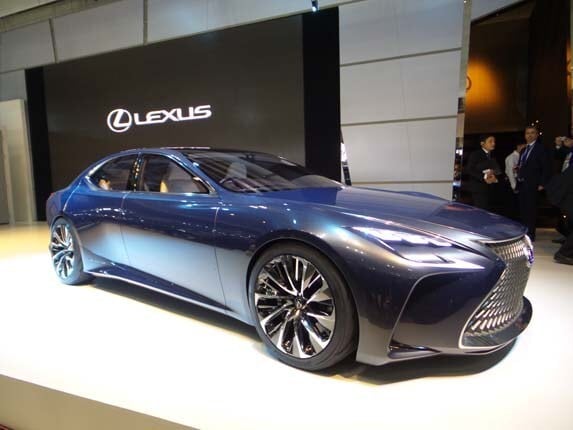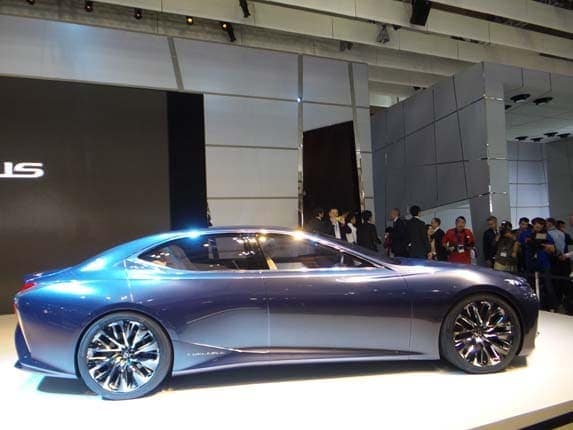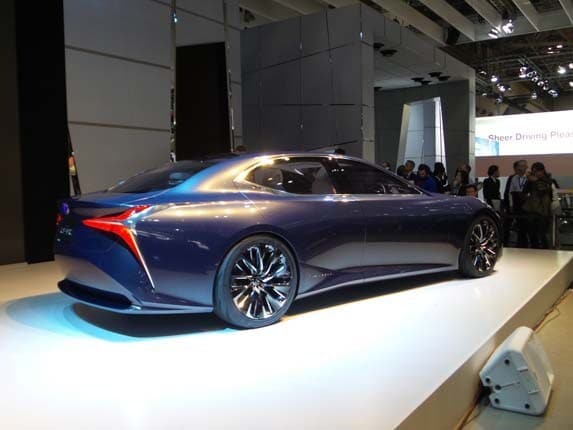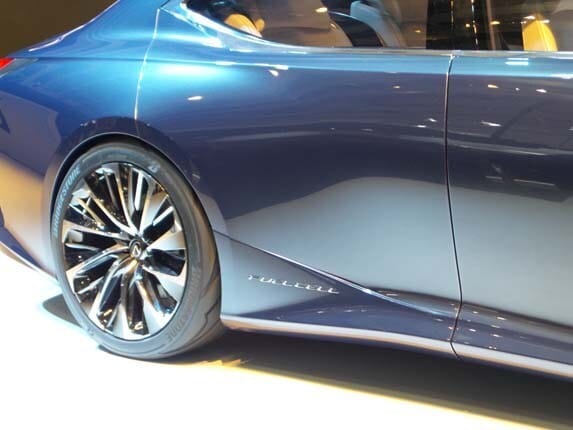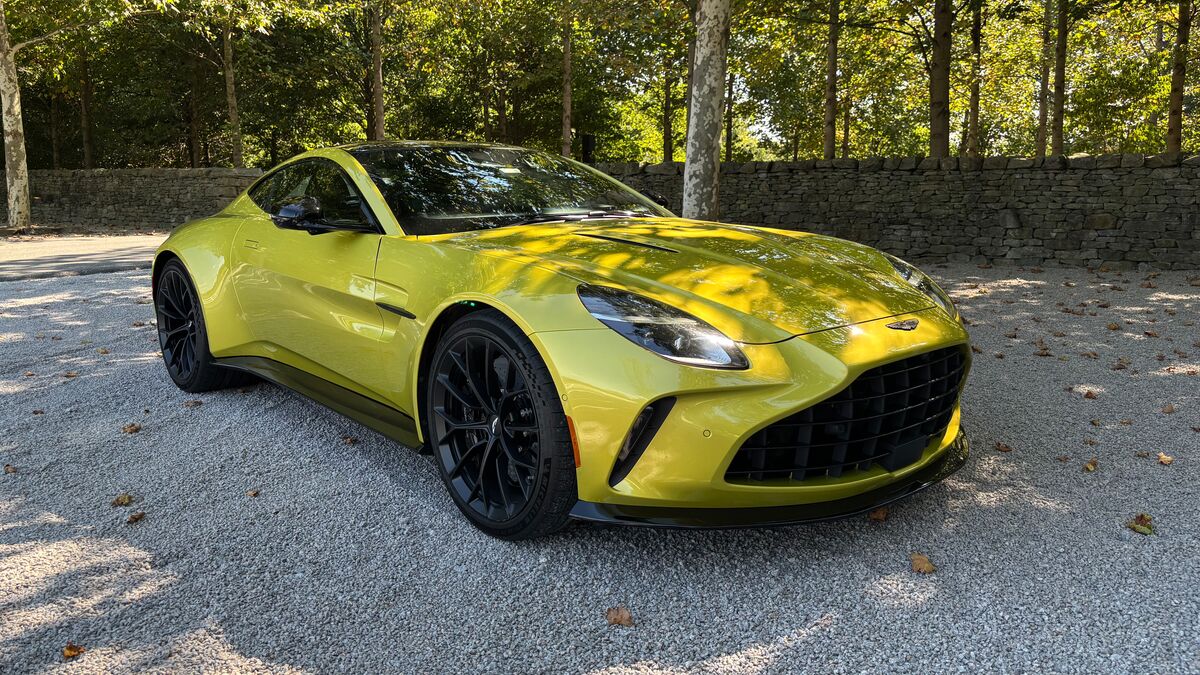One of the memorable stars of a revitalized Tokyo Motor Show was this imposing Lexus grand sedan concept, a sleek executive ride that raises at least a couple of questions. First, is fuel cell propulsion really likely to become a commercially viable anytime soon? That’s the heart of this concept, with a fuel cell stack under the long hood, hydrogen tanks below the floor down the center of the chassis and below the rear seat, and a battery pack at the rear.
The battery drives a trio of electric motors, two turning inside each of the front wheels, a third sending power to the rear axle, making the car essentially all-wheel drive. Lexus says the electric drivetrain will provide an "exhilarating driving experience," but refrains from specifics regarding system output and power-to-weight ratio.
Hydrogen infrastructure a question
What are the chances of a hydrogen infrastructure sufficiently widespread to give such a car a credible business case? Toyota is already marketing its compact fuel cell Mirai, but the limo-size LF-FC is much different proposition. Lexus publicity materials say the company is "getting ready to embrace a hydrogen-based society," but if or when that comes to pass is an open question. General Motors made a similar bet several years ago, which came to naught, and Toyota R&D chief Soichiro Okudaira admits that getting the fuel cell infrastructure sufficiently widespread will require government support and take between 10 to 15 years at a minimum.
Other cutting edge techno elements of the concept package-a holographic center dash console, gesture control, automated driving capability-are much closer to production.
Stylistically, the concept was a Tokyo show traffic-stopper, with its sleek contours, tightly-wrapped skin, low roofline and short overhangs, particularly at the front of the car. A set of 21-inch carbon fiber wheels fill the wheel wells under the subtle fender flares, heightening the sense of sophisticated muscularity.
Also: See the New and Redesigned Cars of 2016
S-Class Rival
This is a big car-almost 209 inches long, and a little less than 56 inches tall. That’s longer and lower than any of the high end Teutons-Audi A8, BMW 7-series, Mercedes-Benz S-Class, the cars that rule this class year in, year out. And it’s also longer and lower-much longer and lower-than the current Lexus LS, the company’s premier sedan.
Aside from fuel cell power, much of this-including styling-will find its way into the next generation LS sedan series when it makes its debut in 2017.
Which brings us to our final question: how much bigger can Lexus possibly make its signature spindle grille before it begins to encroach on the fenders and/or hood? That’s a wait and see, of course, but whatever one may think of this design element, it gives this big Lexus a unique presence that’s hard to ignore, show stand or street.
POPULAR AT KBB.COM
